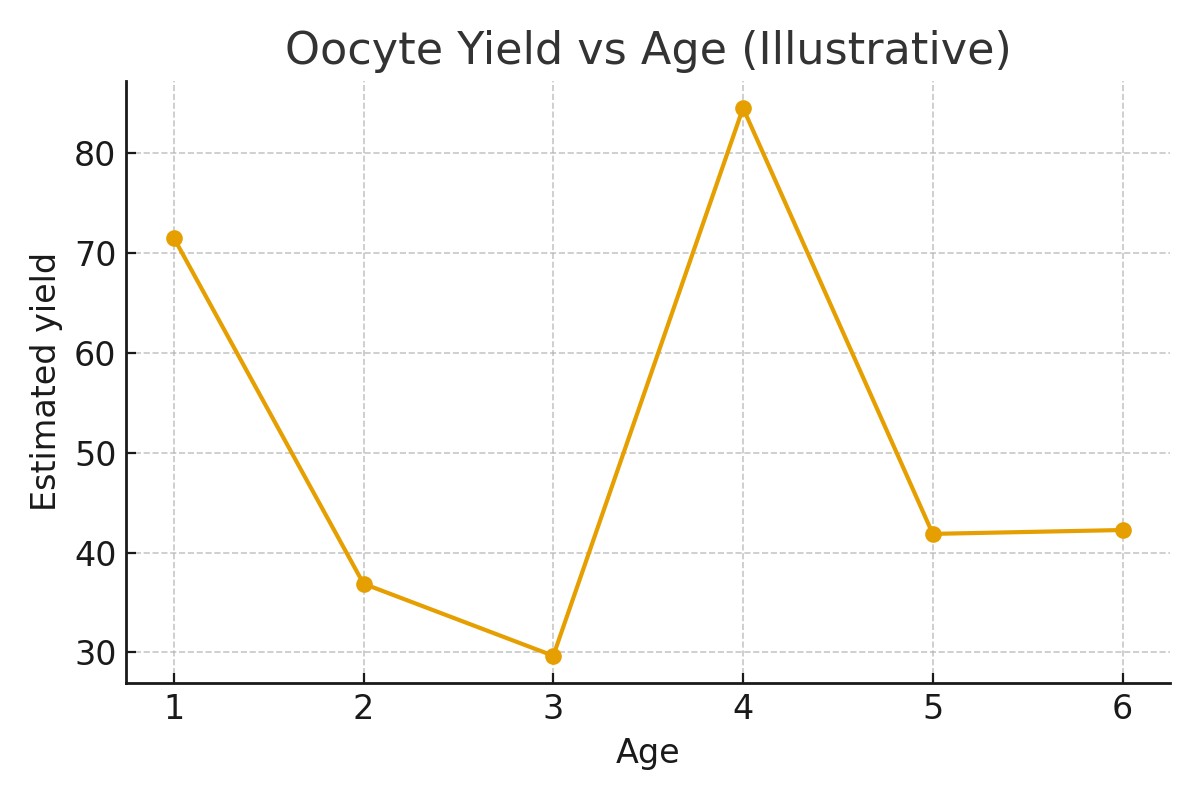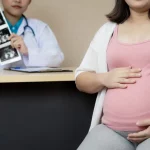
The “trigger shot” is the medication that tells your follicles to complete their final 36 hours of maturation before retrieval. Clinics typically choose between:
- hCG trigger (e.g., Ovidrel, Pregnyl, Novarel)
- GnRH agonist trigger (Lupron)
- Dual trigger (hCG + GnRH agonist)
Each option affects egg maturity, safety, and hormone levels differently. Your trigger choice is tightly connected to upstream factors—your follicle size, estrogen levels, ovarian response—and downstream results like egg maturity, OHSS risk, and when you can safely proceed to retrieval.
Who It Helps
Choosing the Right Trigger Based on Signals
Your ideal trigger choice depends on:
Age:
- Younger patients (<32) with high response may need an agonist or dual trigger to reduce OHSS risk.
- Older patients may benefit from dual trigger to maximize maturity.
Ovarian response:
- High responders: Consider agonist or dual to avoid OHSS.
- Normal responders: hCG or dual both work well.
- Low responders: Dual may improve maturity rates.
Lab markers:
- Estradiol (E2) level on trigger day
- LH level (predicts how well you may respond to an agonist trigger)
Ultrasound findings:
- Number of follicles >14 mm
- Evenness of follicle growth
History:
- Prior cycle with low maturity → dual trigger
- OHSS risk → agonist or agonist-heavy dual
- Poor LH surge response → add low-dose hCG
If you don’t fit clearly into one group, your clinic usually chooses dual — a “middle path” offering both maturity support and safety.
Step-by-Step
How Trigger Decisions Unfold
A simple sequence with timing checkpoints:
-
Monitoring Scan (Days 7–10)
-
Count and measure follicles; review estrogen and LH trends.
-
-
Decision Window: Follicles at 16–18 mm
-
Clinic assesses whether maturity is likely to be a problem, or whether OHSS is a concern.
-
-
Trigger Selection
-
Low OHSS risk + need max maturity → Dual
-
High OHSS risk → Agonist-only
-
Normal response → hCG or dual
-
-
Trigger Timing
-
Inject exactly 36 hours before retrieval.
-
Small timing mistakes can reduce maturity, so clinics confirm via text/call.
-
-
Retrieval & Maturity Assessment
-
Target: 75–85% maturity.
-
If maturity is low, future cycles often switch to dual or adjust timing.
-
This sequence protects egg quality and reduces stress by setting clear expectations.
Pros & Cons
hCG Trigger
Pros
- Reliable maturity
- Familiar, widely used
- Best option for low responders with low LH
Cons
- Higher OHSS risk
- Longer hormonal recovery time
Agonist Trigger (Lupron)
Pros
- Safest option for high responders
- Dramatically reduces OHSS risk
- Fast hormonal recovery
Cons
- May underperform in low or normal responders
- Requires a functioning pituitary to work
Dual Trigger (hCG + Agonist)
Pros
- Often best maturity rates
- Good balance for normal responders
- Useful for past cycles with low maturity
Cons
- Slightly higher OHSS risk than agonist-only
- Uses two medications, slightly higher cost
Costs & Logistics
Line items to expect:
- hCG trigger: ₹3,000–₹7,000 (or $75–200)
- Lupron/agonist trigger: ₹2,000–₹5,000 (or $60–120)
- Dual trigger: combination of both
- Storage, retrieval, monitoring: standard cycle charges
- Potential pharmacy delivery fees
Prior Authorizations:
- Some insurers require approval for hCG brands.
- Agonist trigger may be substituted depending on stock.
Cash-Flow Scenarios:
- Standard cycles budget separately for the trigger to avoid last-minute stress.
- Keep a backup trigger on hand if clinic recommends it — late-night pharmacies may not stock everything.
Tracking Tools:
- Trigger-time countdown
- Medication checklist
- Insurance approval log
Simple tracking prevents last-minute scramble and surprise bills.
What Improves Outcomes
High-impact actions:
- Correct trigger timing — down to the minute
- Matching trigger type with E2 levels and response
- Using dual trigger for previous low-maturity cycles
- Choosing agonist-only for OHSS risk
- Ensuring adequate LH level before using an agonist-only trigger
Low-impact or overrated actions:
- Changing brand of hCG (rarely matters)
- “Extra doses” of vitamins close to trigger day
- Diet changes during the last 48 hours
- Over-monitoring symptoms unless instructed
Focus on the controllable steps that genuinely move the needle.
Case Study
Patient: 32 years old, AMH 3.0 ng/mL, high follicle count
Concern: Wants good maturity but is nervous about OHSS
Scenario:
- Monitoring shows 22 follicles >14 mm, estradiol at 3,500 pg/mL
- Clinic flags medium-high OHSS risk
- To balance safety and maturity → Dual Trigger recommended
- Retrieval yields 20 eggs, with 85% maturity
- Fast recovery, no OHSS
Outcome: Clear plan, low risk, strong egg yield — all due to right trigger choice and consistent check-ins.
Mistakes to Avoid
- Triggering too early “to avoid discomfort”
- Using hCG-only in a high-responder when safer options exist
- Missing the trigger time by more than 10–15 minutes
- Not confirming pharmacy stock ahead of time
- Ignoring prior cycle clues (e.g., low maturity)
Planning + clear thresholds = fewer surprises.
FAQs
Q. Which trigger is best for egg freezing?
Ans : It depends on your response: agonist for safety, hCG for low responders, dual for mixed needs or maximizing maturity.
Q. Does dual trigger always give more mature eggs?
Ans : No — but it often helps when maturity is a concern or when LH is borderline.
Q. Can I choose my trigger?
Ans : Yes. Most clinics welcome shared decision-making based on risk tolerance and previous cycle data.
Q. What if I take the trigger late?
Ans : Notify your clinic immediately. They may adjust your retrieval slot.
Q. Is the agonist trigger less effective?
Ans : Not in high responders — but it may give lower maturity in low responders.
Next Steps
- Free 15-min nurse consult
- Upload labs
- Cost breakdown for your case
Related Links
- Egg Freezing Preservation
- Intended Parents
- Become a Surrogate
- Fixed‑Cost Packages
- Upload Labs
- Locations (NYC)
- SART
- CDC ART
- ASRM

Dr. Kulsoom Baloch
Dr. Kulsoom Baloch is a dedicated donor coordinator at Egg Donors, leveraging her extensive background in medicine and public health. She holds an MBBS from Ziauddin University, Pakistan, and an MPH from Hofstra University, New York. With three years of clinical experience at prominent hospitals in Karachi, Pakistan, Dr. Baloch has honed her skills in patient care and medical research.




